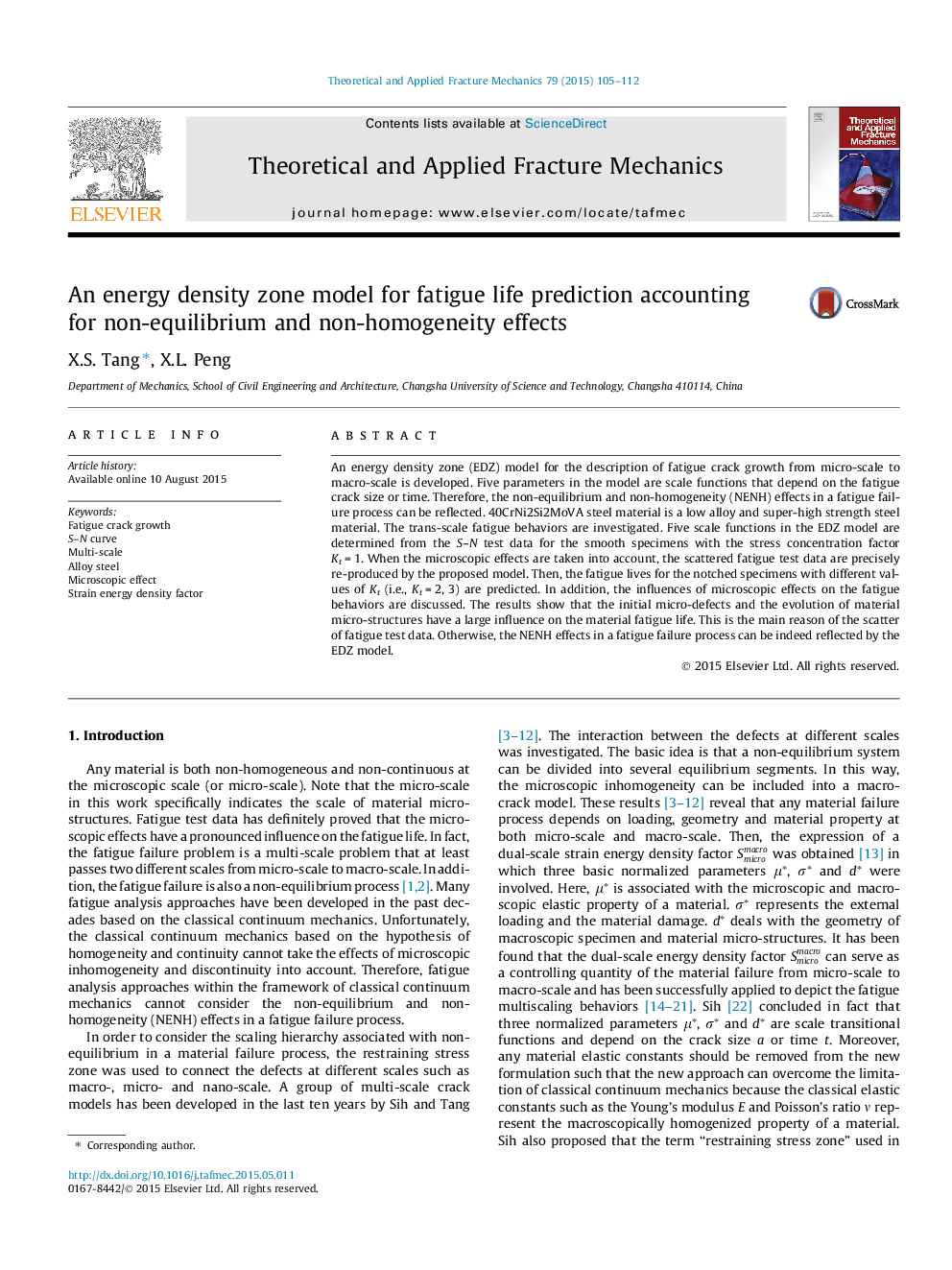| Article ID | Journal | Published Year | Pages | File Type |
|---|---|---|---|---|
| 808714 | Theoretical and Applied Fracture Mechanics | 2015 | 8 Pages |
•Five scaling functions depict non-equilibrium and non-homogeneity effects in fatigue.•Scatter of fatigue test data can be reflected by the proposed EDZ model.•Microscopic effects can be taken into account.
An energy density zone (EDZ) model for the description of fatigue crack growth from micro-scale to macro-scale is developed. Five parameters in the model are scale functions that depend on the fatigue crack size or time. Therefore, the non-equilibrium and non-homogeneity (NENH) effects in a fatigue failure process can be reflected. 40CrNi2Si2MoVA steel material is a low alloy and super-high strength steel material. The trans-scale fatigue behaviors are investigated. Five scale functions in the EDZ model are determined from the S–N test data for the smooth specimens with the stress concentration factor Kt = 1. When the microscopic effects are taken into account, the scattered fatigue test data are precisely re-produced by the proposed model. Then, the fatigue lives for the notched specimens with different values of Kt (i.e., Kt = 2, 3) are predicted. In addition, the influences of microscopic effects on the fatigue behaviors are discussed. The results show that the initial micro-defects and the evolution of material micro-structures have a large influence on the material fatigue life. This is the main reason of the scatter of fatigue test data. Otherwise, the NENH effects in a fatigue failure process can be indeed reflected by the EDZ model.
